by Malcolm Jolley
I went to London and it was a riot – literally. My wife, Apple, and I arrived in the British capital on the Tuesday afternoon following a night of looting and rampaging across the city. When we went for an evening stroll along the Marleybone High Street, we found police everywhere and shops that were closing early and in some cases stripped of everything in the windows so as not to tempt the mob. Oh well, we grabbed a seat outside at Peter Gordon’s The Providores and sipped a Central Otago Chardonnay from their all New Zealand list and watched the preparations.
Of course, we were in London to eat, so soon it was time to head for dinner at Hereford Road. Hereford Road may be said to be a spawn of St. John, Fergus Henderson’s great gastronomic temple to whole animal eating and endangered British foodways. Hereford Road chef and co-owner Tom Pemberton trained under Henderson at St. John in Smithfield eventually becoming head Chef at St. John Bread and Wine in Spitalfields in East London before setting up shop across town in Westbourne Grove in 2007, like Mr. Henderson, taking the name of the street for his new restaurant.
Despite the menace of the rising underclass that evening, Hereford Road was busy. It’s a long and narrow storefront, in an otherwise quiet street. The first thing to greet us was an open kitchen and bar seating. Excellent, I thought. Westbourne Grove had made the news the night before when one of the mobs looting nearby Notting Hill had rampaged into a Michelin-starred restaurant, The Ledbury with the intent of seizing the booze and mugging the clientele. The Ledbury’s kitchen had shown their mettle by surging into the dining room with their knives and pans and driving the would-be assailants back into the streets. At Hereford Road, I reckoned, the chefs could get at them right at the door! Alas, no mobs showed up, but the food turned out to be more than exciting enough. From the kitchen bar area we descended into a large sunken dining room, crowned by an enormous porthole of a skylight, so from our table we could see up into the gardens of the houses around us.
I think it’s safe to say that 20, or even 15 years ago, it wouldn’t have occurred to any tourist like me to go to London to eat British food. In fact, I recall a visit with my father in the early 90s where we sought ought the city’s better Indian and Middle Eastern restaurants, convinced this would be our safest, best bet. And if I was hard pressed to imagine the culinary heritage of my English and Scots forebears I would, at that time, be stuck to come up with much more than boiled things and roast beef. All of that has changed. And, in my humble opinion, the most exciting, vibrant kitchens in London are the ones cooking “British food”, by which they mean local ingredients prepared in whatever way they like.
Before we ordered, our waitress in a thick French accent, informed us that they were out of pigeon. Proof that not only were chefs happily putting things like ham hocks, lamb kidneys and slip soles* on their menu, but also that people were enthusiastically eating them. Apple had the smoked eel to start, a certain homage to St. John, and it was excellent with fantastically fresh horseradish and baby beets served with a salad of their tops. I had lamb sweetbreads that had been flash sauteed perfectly, so they had a crunchy brown Malliard effect crust encapsulating a silky soft and tender middle. They were served with pearl barley and small and delicious peas, again served with their shoots as a bit of green crunch. For a main, Apple had a rib-eye “minute steak” with celeriac cubed like potato and an anchovy butter. The execution made the dish, as the rib eye had been sliced into lengths of only a few millimetres thick. The cook on the grill had managed to cook the steak just so that it remained medium rare – a minute indeed. I had a whole grilled mackerel which came with a lovely sorrel mayonnaise and what seems to be the must-have, “it” ingredient this season: samphire, or “sea asparagus”. All very good. Dessert was simple and equally well done: Apple had a buttermilk pudding (a panna cotta, really) with the biggest, plumpest stewed gooseberries I have ever seen. I had a deliciously salty caramel ice cream. When we left the restaurant at about 11, we looked for looters but only found groups of two or three bobbies on every corner, often moving along some of the more refreshed patrons coming out of the pubs.
We stayed with family in Bloomsbury, and the next morning we set off on foot for a bit of a gastro-trek, heading northeast. First to Exmouth Market, home of Moro of cookbook fame and general culinary achievement. Moro has opened a small bar restaurant next door called Morito and if it hadn’t been mid-morning, we would have likely stayed to eat, crossing our fingers that Nigel Slater might pull up a stool next to us, since the Guardian newspaper’s offices are close by. Also alluring were the eel pies and mashed potatoes at Clark’s a few doors down. In fact the whole of this small street was packed with gastro-temptation, as there was a street food festival underway. But we pressed on to Islington and the restaurant outpost of Ottolenghi, the Israeli-Italian deli whose chef-owner Yotam Ottolenghi has become a best selling cookbook author. It was easy to see why, since on display were beautifully bright and light salads and in the dining room were a horde of North-Londoners enjoying them. At a quarter past noon, it was packed. Rather than stay, wait and join the mineral water crowd, I persuaded Apple that I required a somewhat stronger kind of English refreshment and we set off to find a pint of ale. Couscous would give way to hops and malted barley.
The gastropub concept does not export. In North America there are pub-like restaurants that serve excellent food and pour great beers and wines, but it’s not quite the same. Essential to the whole gastropub experience, is the room itself. My favourite gastropubs, like The Havelock near Shepherd’s Bush, are converted from old pubs. Anything else is really just a restaurant. The Landsdowne in Primrose Hill has one of these beautifully simple and light filled rooms with an big old bar stretching across one wall that telegraph immediately that this would be a perfect place to while away the afternoon reading the papers. And, indeed, there was some of that happening when we arrived. It was a beautiful day, so we sat at one of the picnic tables on the pavement (translation: sidewalk) outside, and walked in to see the menu written on a large chalkboard and order our drinks (Truman’s Summer Runner ale for me, a Loire rosé for the lady) and lunch. Ordering at the bar is another perfect gastropub experience, by the way, since there’s no way for the staff to get flowery on the sell – the food must, and will, speak for itself. And did it ever. The food was fresh, smart and right on point of a summer afternoon. We each had a cold watercress and other greens soup, then shared three plates from their list of appetisers: grilled sardines with sauce vierge, a bruschetta of rocket, prosciuto and grilled peaches and grilled prawns with a garlicky beurre noisette with (you guessed it) samphire. At the end of lunch, Apple went up to the “high street” to check out the shops, while I found a newspaper and enjoyed another pint. Heaven on Earth.
Dinner on Wednesday night was with a group of friends at a Vietnamese joint in Soho, followed by an enthusiastic session at a pub in Mayfair. Familial and social obligations had us on a train back to Wales early Thursday afternoon, so we decided to try and have lunch somewhere near Paddington. But where? To the rescue came Apple’s step-mum the journalist, lavender farmer and cosmetics queen, Nancy Durham. What could be more English than having lunch at a club? And Nancy is a member in good standing of the Frontline Club, just around the corner from the train station. The Frontline Club was set up as a meeting place for working, and especially freelance, journalists. It came to some renown recently as the home of Julian Assange during the height of the Wikileaks controversy last autumn. Indeed, Mr. Assange’s current residence is at the country home of the Frontline’s founder, the soldier turned derring-do war correspondent Vaugn Smith. Mr. Smith’s estate does more than harbour Mr. Assange, it also provides all the fresh vegetables and other food for the kitchen of the club and its restaurant, which is open to the public. We sat on the second floor in the “club room” as Nancy’s guests. Around us were various serious looking people having business meetings or staring intently into their laptops. All around us were souvenirs of war coverage, including the mobile phone and money clip that took a bullet, thus sparing Mr. Vaughn’s life in Bosnia in the early 90s. The menu was the restaurant’s and offered the most English yet interpretation of the new British cuisine with a nettle risotto , or organic salmon with horseradish potato salad and, wait for it, samphire, as well as side dishes like peas and carrots with mint. I had a gaspacho (had a bored Mr. Assange picked the tomatoes that morning, looking for something to do while his extradition case grinds on?). Apple had ceviche of stone bass with grapefruit, lemon and coriander (translation: cilantro). Apple’s main was a tomato tart with a lovely melted crown of Cornish blue cheese, garnished with a salad of garden herbs. I opted for the goujons of plaice with Tartar sauce, in other words: fish’n’chips. The panko-crumbed fish and meaty chips were delicious lathered in creamy, dilly sauce and a spritz of malt vinegar, a perfect embodiment of all the new things going on in the old country. Even better, the proceeds from the restaurant go towards the club and its programs across the world helping journalists cover the darker corners of the Earth and fighting for the free exchange of information.
We had to catch our train, so we skipped the Dorset strawberries with cream and headed for Paddington, having learned that if you go to London, whatever you do, try the local food.
* Slip soles are small young Dover sole – I had to ask to ask our French waitress.
 Malcolm Jolley is the executive director of Good Food Media, a not-for-profit organisation dedicated to educating the public about artisanal food and the publisher of Good Food Revolution. Follow him at twitter.com/malcolmjolley.
Malcolm Jolley is the executive director of Good Food Media, a not-for-profit organisation dedicated to educating the public about artisanal food and the publisher of Good Food Revolution. Follow him at twitter.com/malcolmjolley.

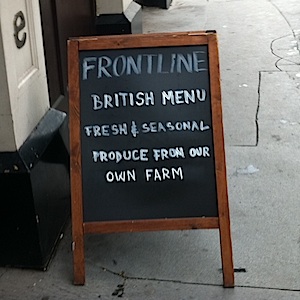




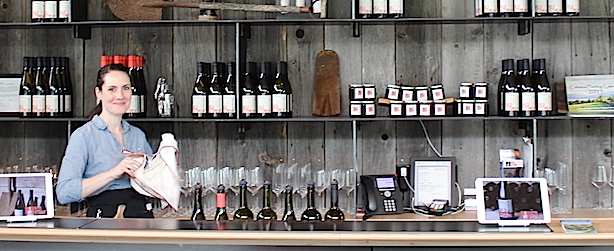
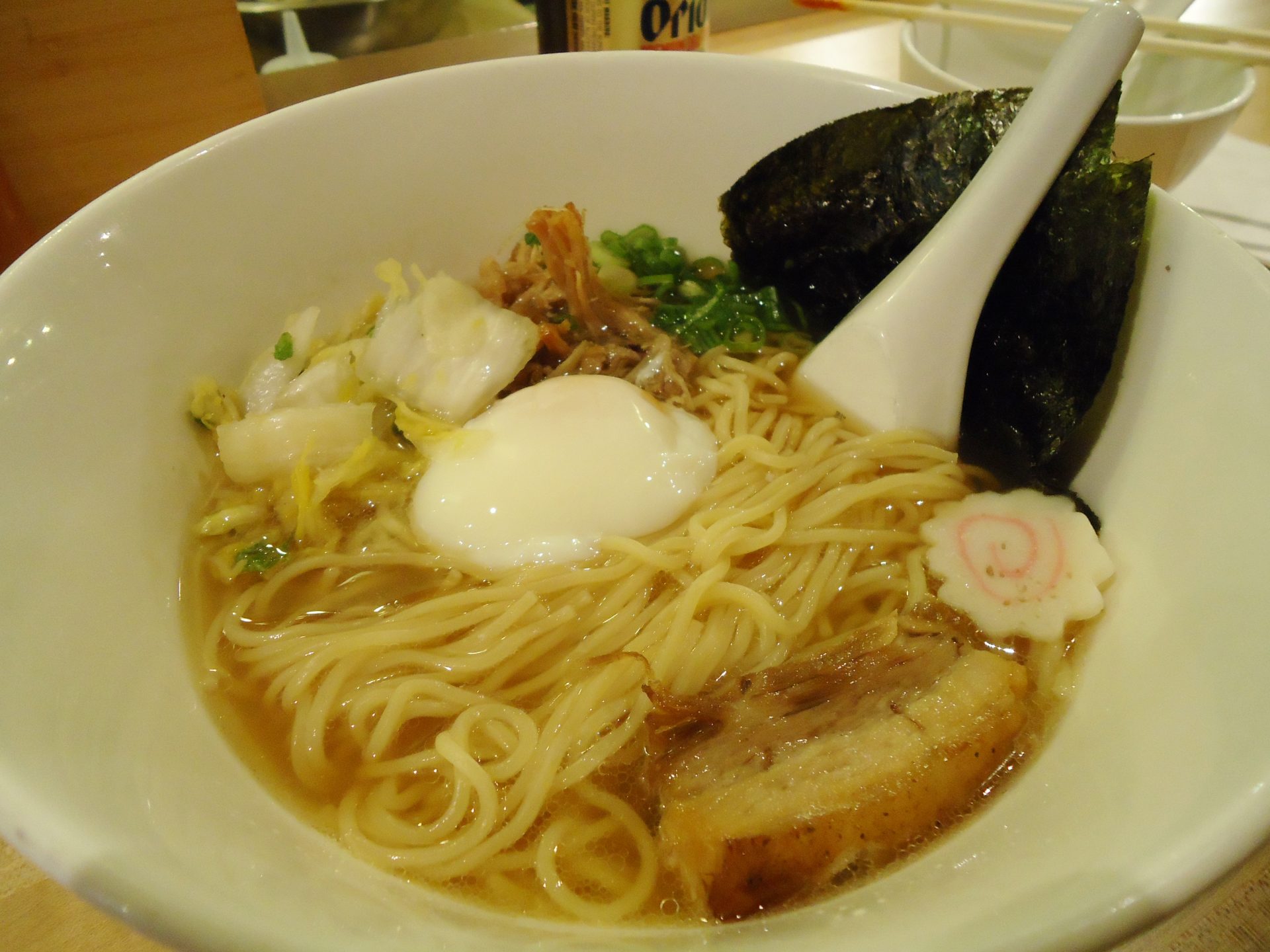
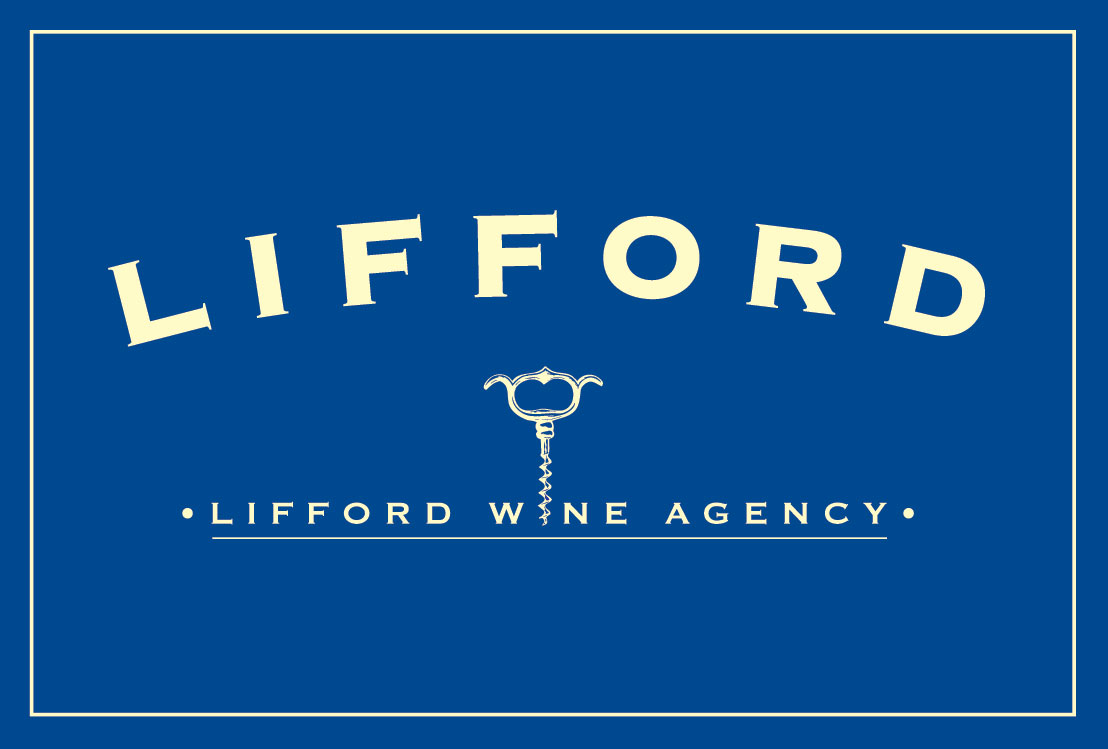
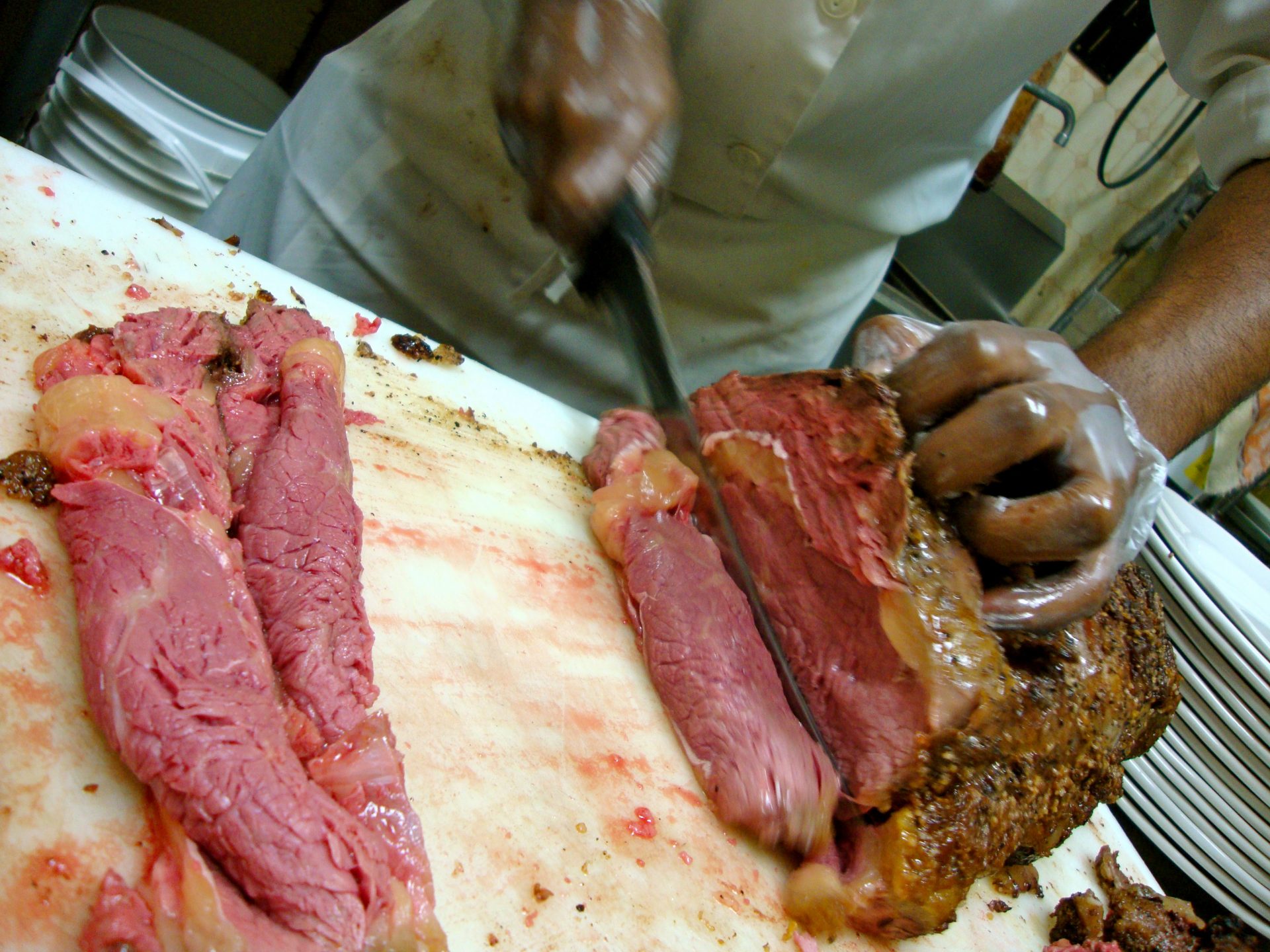

Frontline’s excellent! It’s near my work and I go there all the time. Everything on their menu is relish – simple food cooked beautifully, love it!
Hi Malcolm,
Great story..made me wish I was there with you ! Welcome back. Mum